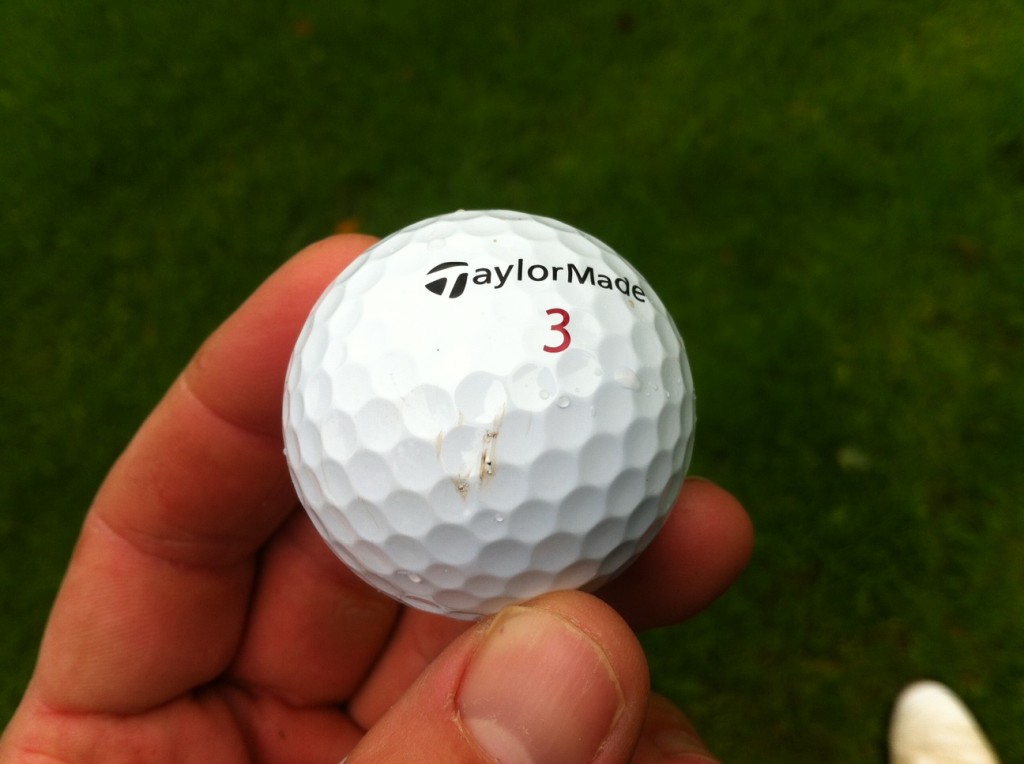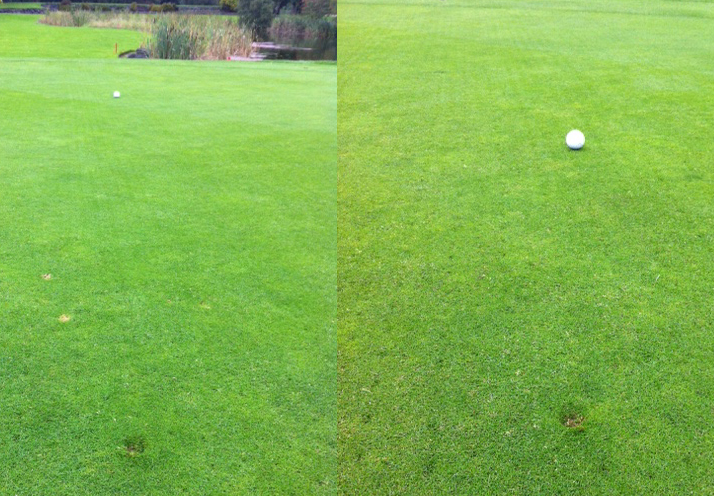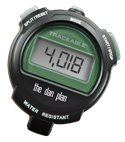Golf ball comparison test part one: Titleist, TaylorMade, Bridgestone and Nike
I had some pro shop credit at a couple of golf courses from tournament winnings earlier in the year and decided to spend it on as many different high quality golf balls that I could get my hands on. It wasn’t a large sum of money and it had to be spent before it expired and I’ve been curious as to what differentiates golf balls. Outside of reading reviews on spin and distance, etc, I wanted to know how these top tier balls actually played when compared with equally priced competing brands. If you are going to spend $3-4 per ball you might as well make sure you are buying the optimal ball, right?
The first thing I learned: No matter the brand, color, markings, etc, I loved how each one sounded when it hit the bottom of the cup.
The balls that I purchased and will review in a two-part blog: Titleist ProV1-X and NXT Tour-S, TaylorMade Lethal, Bridgestone B330 and E6, Nike 20XI, Callaway Hex Chrome, Srixon Z-Star, Dixon Earth, and I threw in some of the new Titleist Velocity for the heck of it.
It’s a pretty good list of a bunch of balls that I was interested in trying. For the record, I have been fit for and predominantly play the Titleist ProV1-X and occasionally hit around the NXT Tour-S during practice rounds. In the past I played the Nike Tour One D and then the 20XI for a bit when they made that switch but have been playing Titleist for about the past 8 months.
A bit about me, your (hopefully) trusted reviewer: If anything, I have a tendency to play too much spin. Judging by my TrackMan stats, both from tee shots and approaches I have high spin pretty equivalent to Tour averages with my irons and a bit higher with the driver. So, I play the Titleist ProV1-X to help control that spin. My swing speed with the driver is between 101-108mph depending on how much I go after it. Keep those numbers in mind and always remember that the most important thing is to find a ball that feels right and performs how you think it should.
Bridgestone E6. The E6 is a 3-piece ball with a surlyn cover. A friend, who happened to finish the Appalachian Trail yesterday, (I have to show his picture here, it’s mega awesome inspiring, he just finished hiking more than 2,000 miles):

played these balls all last winter as they are a lower compression rate and he insisted he hit them better when it was sub-45 degrees out. Playing with him I was not going to argue as he consistently drove the ball 20 yards past me in January. So, I decided to pick some up and see how they performed. I hit the first ball off the driver’s toe and it started turning and then seemed to pick up steam as it shot across the fairway into some trees. It wasn’t a good start, but I punched out and then hit a solid 205 yard hybrid to the green which one-hop stopped pin high. The ball felt great off of the putter, almost bouncing off and landed in the bottom of the cup for a birdie.
Not a bad start for old E6, although definitely not loving that first drive. On the next hole, I must have left the face open a bit and the ball took off super high and drifted hard until it found some water to land in. I’ve played that hole probably 500 times and never pushed it far enough to reach the water. Another troubling sign. I took a drop, hit a 210 hybrid and two putted for a bogey. The third hole was a par 3 and the ball felt solid off of my 7-iron. Putting was good again.
On the fourth hole, I managed to hit a harsh snap hook and hit it into a hazard closer to the pin than I think I have ever done on that hole. Again I dropped and hit the green from 210 yards, so at least it worked well off my hybrid’s face, but there was so much spin coming off my driver that my miss-hits were unplayable.
The fifth hole I hit the drive OB once again, officially concluding my E6 test as I only brought out a sleeve with me. The ball honestly felt good, but my intuition tells me that the lower compression was amplifying my misses and when you struggle with keeping it in play with your driver you can’t afford to make tee shots harder, so I was happy to move on to the next ball.
TaylorMade Lethal: The Lethal is a five-piece urethane covered ball. I don’t know if the TaylorMade folks are marketing geniuses or imbeciles. Their product names are interesting to say the least. Perhaps it’s working and good for golf, and perhaps there is a whole new youthful generation growing up loving this stuff, or maybe they are just having fun with us and seeing how “different” they can name things. Whatever it is, people joke around with the names of their stuff and that proves brand recognition. Anyway, on to the Lethal (I just feel like it should be italicized and perhaps a snake head instead of the “a” in the name). I thought this was a cheaper consumer ball and didn’t realize that they basically changed the name of their TP5 ball to Lethal until I was in the shop buying balls.
In the past year, I have played my best rounds with either a Titleist or a TaylorMade ball so was pretty excited to try this new one out. This ball touts more distance and better control, but then again so do all premium balls and with regulated coefficient of restitution it’s hard for me to believe that a major golf company like TaylorMade somehow managed to make their balls go farther (or further, as my grammatically incorrect self likes to say). And if they have done that it just means their past balls had not been optimized.
I will spare you a hole by hole with the Lethal as I played it for the remaining 13 holes as well as 9 the next day. It held up great, and how well the cover held up was one of the strangest things about the test. Here is a pic of the ball immediately after it landed hard on a cart path:

It’s not a bad thing by any means, but after playing 22 holes with this ball and hitting all sorts of trees and a couple cart paths I was a bit shocked that this tiny scratch was the only discernible damage on the ball. All of the other urethane balls that I have played seem to get beat up easily and if this is how it is then TM has a good thing going for them.
The ball played well. It had a very nice muffled sound off of the driver (I play a Titleist 913D3) and generally had a good feel to it. It is the closest thing to a ProV1line of balls that I have played and I felt confident while teeing it up that the ball would perform according to the quality of the stroke applied.
I would do a full review of the ProV1, but in all honesty it is the standard for golf balls and what I currently play so the point is to really see how other balls stand up to that line.
Nike 20XI: a 4-piece with urethane cover: It’s hard to find specific details about the construction of this ball. What I do know is that this ball was a disappointment. After reading so much about how Nike was going to reinvent their 20XI line I was looking forward to give this a go. Back in the day, I learned to putt and strike the ball with the Nike Tour One D and enjoyed hitting that ball, but then they went to their resin core and the past few balls have been anything but fun. That said, I do believe that if you have a driver swing speed above 112mph you can play this ball. It’s hard, and it takes a lot to compress it. Also, it rolls slow on the putting green and for me doesn’t seem to check up quite as much as other balls. This could be a good thing, though, as you can see from this pick that the Nike rolled back just 4 feet with an 8-iron to a par 3 while the Taylormade Lethal spun back about 15 feet. In this photo the Lethal is on the left and 20XI on right:

It was an extremely similar strike with those clubs, and both balls landed within 2 feet of each other distance-wise, but had an entirely different experience after impact. This was very interesting. Later on I hit about 10 different balls to this same green and finished with a a Pro V1-X which one-hop stopped and pulled back about a foot from the mark. But, that’s a story for the next comparison.
Nike says on their site that the 20XI is for swing speeds from 85mph and higher but to me it doesn’t seem to compress off of the driver and my gut tells me, as I said before, it’s for the big hitters out there.
As a final test, I hit tee shots with all of these balls: Titleist ProV1X, Nike 20XI, TaylorMade Lethal and Bridgestone E6 and not too surprisingly they all landed within 10 yards of each other. There was no significant difference in total distance, but sound and feel varied. Nike sounded the most like a Top Flite: hard and metallic. The Bridgestone felt somewhat like hitting a stale marshmallow, although great off the irons and pretty decent around the green and for half the price of the others it’s not a bad option, especially if your swing speed is under 95mph. The Lethal had a nice muffled sound and was a solid ball all around. The Titleist just felt like home and I knew exactly how far it was going to fly and how it would perform on approach shots and around the green.
Next post I will continue the process and look at the Bridgestone B330, Callaway Hex Chrome, Srixon Z-Star and try out the Dixon Earth. As always, the ball to stand up to will be my trusty Titleist ProV1X. Also, I’ll take a look at the new NXT Tour S and Velocity balls by Titleist.
ADDENDUM::::
Today I was very curious as to what would happen if I played a “best ball” 9 holes with the TaylorMade Lethal and the Titleist Pro V1X. I went out on the back nine of Riverside and alternated which one I hit first (so as to not have a bias towards the second shot) and played with the idea of wanting to score well in mind. At the end of the 9 I shot even par with one bogey and one birdie, but felt like I could have dropped a few more if the greens hadn’t been recently punched and top dressed. Putting was pretty obsolete. Here are the competitors:

I didn’t count putts in my shot count and only had one chip throughout the nine (hit 7 greens in reg, chipped on one par 3 and the bogey was after a punch out to 140 yards that I then hit and 2-putted) and if both tee shots were in the fairway or equally bad in the rough it was a push.
So, the game was to see which ball I hit better, or which ball suited my personal game better. I kept a running tally through the nine as well as some notes on distances. I did see a bit more iron distance off of the Lethal, although it had more spin and tended to pull back farther on the greens equalizing the shots. For example, on one par 3 I hit the green with both balls. The Titleist took a little hop and pulled back one foot to rest at roughly 154 yards and the Lethal landed about 159 yards but spun back to almost exactly where the Titleist ended up. They flew different distances but ended up within 4 inches of each other.
In another situation, I hit two cut layups on a par 5 and the balls landed about as close as possible:

you can see how sanded things are, it’s that time of year where top dressing is in fashion. You can also see that to similar cut shots from the rough with a 7-iron landed exactly the same distances.
I finished the round and in all honesty the ball that got the shot was the one that was hit better. I suppose that’s probably true with any ball, but I was curious to see how to top-tier competitors would hold up in a direct battle. Long story short:
Titleist: 7
TaylorMade: 7
I hit each of them an equal amount of “winning” shots.
Personally, I felt like I knew the Titleist better and my approach shots were tighter with that ball, but the TM kept doing well off the tee. This needs some more research, but it’s an interesting experiment. What has everyone else found about their golf balls?

